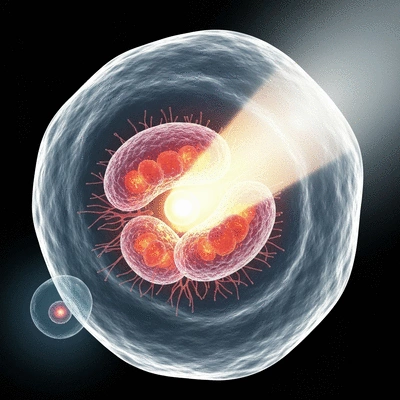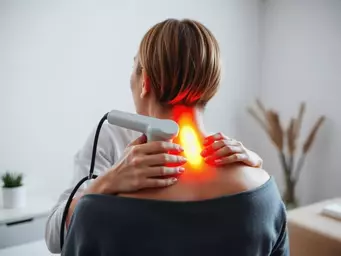Red Light Therapy
Wavelengths: 600-700 nanometers
Penetration: Superficial tissue treatments (skin surface)
Primary Uses: Collagen production, skin healing, rejuvenation, inflammation reduction.

Curious about how light can play a pivotal role in healing? The world of light therapy is rich with potential, and understanding its nuances is crucial for anyone interested in holistic wellness. Let's explore some key takeaways that can guide your journey into red and near-infrared light therapy!
This visual compares the key characteristics of red light therapy and near-infrared light therapy, highlighting their distinct wavelengths and penetration depths.
Wavelengths: 600-700 nanometers
Penetration: Superficial tissue treatments (skin surface)
Primary Uses: Collagen production, skin healing, rejuvenation, inflammation reduction.
Wavelengths: 700-1100 nanometers
Penetration: Deeper tissue penetration (muscles, joints)
Primary Uses: Pain alleviation, cellular repair, deep tissue healing.
Both therapies operate via photobiomodulation, activating light-sensitive proteins to enhance cellular activity.
Welcome to the fascinating world of light therapy! Here at Erchonia Laser, we’re dedicated to shedding light on the transformative benefits of low-level laser therapy (LLLT). In this section, we’ll explore the core concepts of red and near-infrared light therapy, including how they work and their significance in healing.
So, what exactly are red light therapy and near-infrared light therapy? Both therapies utilize specific wavelengths of light to stimulate healing processes in the body. While they share some similarities, they also possess unique characteristics that cater to different treatment needs.

Red light therapy targets the skin's surface with wavelengths typically ranging from 600 to 700 nanometers. It is known for its ability to promote collagen production and enhance skin healing. On the other hand, near-infrared light therapy operates at wavelengths between 700 and 1100 nanometers, penetrating deeper into the tissues to alleviate pain and support further cellular repair. Research continues to explore its potential benefits, including studies on how red light could be a step closer to treating age-related macular degeneration (AMD).
Understanding these distinctions is crucial for selecting the right treatment for your specific needs. With a solid grasp of these therapies, you can better appreciate their roles in enhancing your overall wellness.
At the heart of light therapy lies the science of wavelengths. Wavelengths determine how deeply light penetrates the skin and which biological processes are activated. For instance, red light primarily influences the surface layers of the skin, while near-infrared light reaches deeper tissues, making it more effective for conditions like joint pain. The Cleveland Clinic provides further insights into red light therapy and its applications.
This unique ability of each wavelength to interact with cellular structures means that the choice of therapy can significantly affect treatment outcomes. By utilizing both types of light, practitioners can potentially enhance healing effects across various conditions.

Photobiomodulation is the key mechanism through which light therapy exerts its effects. This process stimulates cellular activity by activating light-sensitive proteins, leading to increased ATP production and improved mitochondrial function. For example, a recent study highlighted in Nature Communications demonstrated the potential of photobiomodulation to enhance visual function in patients with chronic central serous chorioretinopathy.
Understanding photobiomodulation is essential for both healthcare professionals and patients. It clarifies how simple light can initiate complex biological responses, paving the way for improved health and recovery.
To maximize the effectiveness of your light therapy sessions, consider combining both red and near-infrared light treatments. This dual approach can enhance healing and provide comprehensive benefits, addressing both superficial and deeper tissue concerns. Always consult with a healthcare professional to personalize your therapy plan for optimal results.
Red and near-infrared light therapy has emerged as a promising solution for various health concerns. As we explore the benefits of these non-invasive treatments, it’s important to remember that understanding how to effectively implement them can significantly enhance your experience. My journey with Erchonia Laser has shown me the transformative power of light therapy, and I’m excited to share these key takeaways with you!
By integrating these key points into your treatment plans, you can confidently navigate the world of light therapy. Whether you’re a healthcare professional or a patient seeking relief, understanding these concepts will guide your approach.
Approaching light therapy with a well-rounded understanding can make all the difference in its effectiveness. As you consider treatment options, reflect on the following strategies:
By taking an informed path forward, you can ensure a personalized approach to your light therapy journey. It’s all about empowering yourself with knowledge—something we at Erchonia Laser are deeply passionate about!
Safety should always be a priority when integrating any new therapy into your routine. Here are some essential practices to keep in mind:
Adhering to these safe practices will help maximize the benefits of light therapy while minimizing potential risks. Remember, knowledge is power, and I encourage you to reach out if you have questions or need guidance along the way!
I believe that sharing experiences can foster a deeper understanding of light therapy. If you’ve had positive outcomes or challenges, we want to hear from you! Engaging with others can enhance our collective knowledge and support.
At Erchonia Laser, we’re committed to providing you with valuable resources on low-level laser therapy. Whether you’re looking for treatment protocols, research articles, or community support, our platform is here to help. Don’t hesitate to explore our website for more information, and feel free to reach out with any questions!
Let’s illuminate the path to wellness together. Your journey into the world of light therapy starts here, and I’m excited to be part of it!
Here is a quick recap of the important points discussed in the article:
Understanding Red Light Therapy

Curious about how light can play a pivotal role in healing? The world of light therapy is rich with
Erchonia Laser Therapy for Pain Management

Curious about a non-invasive solution to chronic pain? Erchonia Laser Therapy is emerging as a revol
Relieving Neck and Shoulder Pain

Consider this: neck and shoulder pain affects millions, yet many are unaware of the root causes. Und
Understanding Red Light Therapy
Erchonia Laser Therapy for Pain Management
Relieving Neck and Shoulder Pain
Erchonia Laser and Back Pain Outcomes
Exploring Erchonia's Laser Technology Science